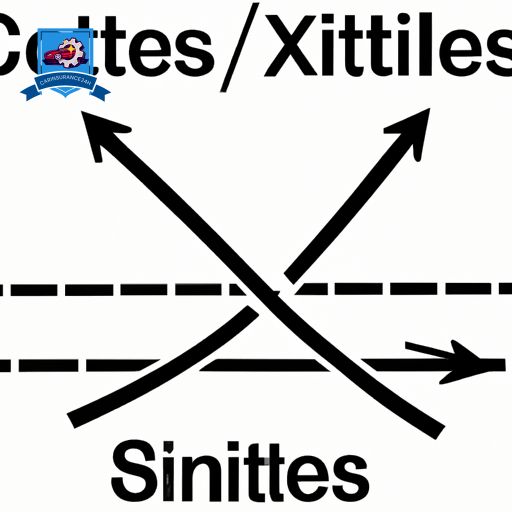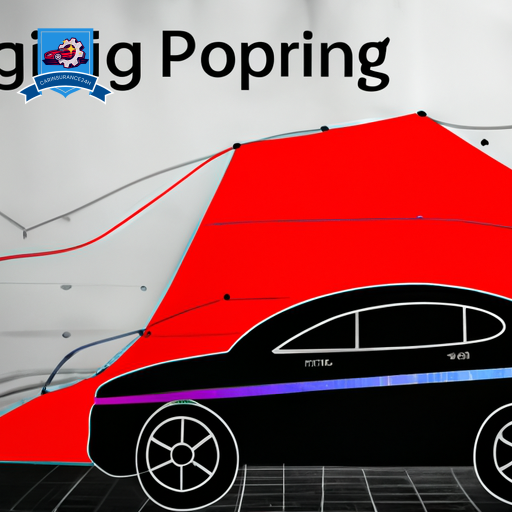In the domain of auto insurance, understanding the intricacies of policy limits is vital for both new and seasoned policyholders. These limits not only define the maximum amount an insurer will pay following a claim but also influence the cost of premiums and the extent of coverage.
However, moving through types of coverage, such as split limits versus combined single limits, and evaluating one’s needs against state minimums can be intimidating. Further exploration into how these limits interact with other factors, such as risk assessment and premium costs, reveals a complex landscape that demands careful consideration.
The question then arises: how does one strike the perfect balance between adequate protection and cost-efficiency in their auto insurance policy?
Understanding Policy Limits

Understanding policy limits, a pivotal component of car insurance, involves recognizing the maximum amount an insurance company will pay under a policy for a covered loss. This is central to grasping how car insurance operates, ensuring policyholders can make informed decisions about their coverage needs. Policy limits are influenced by various limit factors, including the type of coverage, the policyholder’s risk profile, state regulations, and the policyholder’s chosen limits. These factors collectively determine the extent of financial protection provided in the event of an accident or loss.
A common coverage misconception is that higher policy limits automatically equate to prohibitively expensive premiums. In reality, while premiums may increase with higher limits, the additional cost is often minimal compared to the potential financial protection offered. This underscores the importance of carefully considering one’s coverage needs against the backdrop of potential risks and the financial implications of underinsurance.
Furthermore, policyholders must navigate the complexities of limit factors with a clear understanding that these limits represent the ceiling of what their insurer will cover for a claim. Exceeding these limits may result in significant out-of-pocket expenses, highlighting the critical nature of appropriately setting one’s policy limits.
Types of Coverage

Car insurance encompasses a variety of coverage options, each designed to address specific risks and damages associated with vehicle ownership and operation. Understanding the types of coverage available is important for policyholders to make sure they have the protection they need while also managing their insurance costs effectively.
Among the numerous types of car insurance coverage, three key options stand out for their importance in providing financial protection against different kinds of risks:
-
Liability Coverage: This is the most essential type of car insurance coverage, required by law in most states. It covers the costs associated with damage and injury to others if the policyholder is at fault in an accident. Liability coverage does not cover the policyholder’s own injuries or vehicle damage.
-
Collision Coverage: Collision coverage is specifically designed to cover the cost of repairs to a policyholder’s vehicle after an accident, regardless of who is at fault. This type of coverage is particularly important for those with newer or more valuable vehicles. Deductible options are available, allowing policyholders to choose a higher deductible to lower their premium costs.
-
Thorough Coverage: This coverage protects against non-collision-related events, such as theft, vandalism, or natural disasters. Like collision coverage, comprehensive coverage often comes with deductible options, giving policyholders flexibility in managing their policy costs.
Understanding the specifics of each coverage type, including the benefits of collision coverage and the impact of deductible options, is essential for policyholders to tailor their insurance to their unique needs without paying for unnecessary extras.
How Limits Affect Premiums

After exploring the different types of coverage available, it’s important to examine how the limits set on these policies impact the premiums policyholders pay. Setting higher limits on your car insurance policy typically translates to higher premiums, as the insurer takes on more risk. Conversely, lower limits can reduce premiums but may not provide adequate coverage in the event of a significant claim. This delicate balance requires careful consideration to make sure both affordability and protection.
Discount factors also play a critical role in this equation. Insurance companies often offer discounts for various reasons, such as maintaining a clean driving record or installing safety features in your vehicle. These discounts can notably lower premiums, even with higher coverage limits. Policyholders should actively inquire about available discounts to maximize savings while securing the coverage they need.
Deductible choices are another crucial aspect impacting premiums. A higher deductible— the amount paid out of pocket before insurance coverage kicks in—can lower premiums because it reduces the insurer’s potential payout in the event of a claim. However, policyholders must make sure they can comfortably afford the deductible they choose. Opting for a too high deductible to save on premiums can backfire if a claim occurs and the deductible is unaffordable.
Calculating Your Needs

Determining the appropriate level of car insurance coverage requires a careful evaluation of one’s individual needs and financial situation. This process, integral to maintaining both financial stability and compliance with legal requirements, involves a thorough risk analysis. Identifying the right policy limits is not a one-size-fits-all task; it necessitates a personalized approach that considers various personal and environmental factors.
To navigate through this important decision-making process, consider the following steps:
-
Evaluate Your Assets: The more assets you have, the higher your risk of losing them in a lawsuit following an accident. Assessing the total value of your assets helps in determining the amount of coverage needed to protect your financial stability.
-
Consider Your Risk Exposure: Every driver has a unique risk profile, influenced by factors such as driving habits, commute length, and geographic location. Conducting a risk analysis helps in understanding the likelihood of filing a claim, which in turn influences the desired coverage limits.
-
Analyze Future Income Potential: For younger or high-earning individuals, protecting future income from garnishment in case of at-fault accidents is important. This often means opting for higher coverage limits to safeguard against potential lawsuits that could target future earnings.
Choosing the right car insurance policy limits is a balancing act. It involves protecting your assets and future income while making sure the premium remains within your financial reach. By meticulously evaluating your specific needs, assets, and risk exposure, you can make an informed decision that guarantees financial stability and peace of mind.
State Minimums Explained

Each state in the U.S. sets its own minimum requirements for car insurance, creating a landscape of varying regulations that all drivers must navigate.
This section will explore the nuances of state-mandated coverage types, providing a clear definition of what each entails.
Additionally, we will examine how these minimums can impact drivers, both financially and legally, to guarantee informed decisions about car insurance policies.
Understanding State Requirements
Understanding state requirements is essential, as each state mandates its own minimum levels of car insurance coverage. These regulations are designed to make sure that all drivers can cover the cost of damages or injuries caused by accidents for which they are at fault. Not meeting these minimums can lead to severe driving penalties and accusations of insurance fraud.
-
Driving Penalties: Failing to meet state-mandated insurance minimums can result in fines, license suspension, and even vehicle impoundment.
-
Insurance Fraud: Misrepresenting your insurance status or intentionally avoiding insurance requirements can lead to criminal charges.
-
Financial Responsibility: States require minimum coverage to protect drivers financially in the event of an accident, making sure that victims receive compensation for their losses.
Coverage Types Defined
Having established the importance of meeting state requirements for car insurance, it is now pertinent to explore the different types of coverage that constitute these state minimums. Typically, these include liability insurance, which covers damages to others for which you are responsible.
Some states also require personal injury protection (PIP) and uninsured/underinsured motorist coverage. Each type of coverage has its own set of coverage exclusions, which delineate scenarios not covered by the policy. Understanding these exclusions is essential to make sure adequate protection.
Additionally, policyholders can select deductible choices, affecting their premium costs and out-of-pocket expenses in the event of a claim. A higher deductible usually results in lower premiums, but it’s crucial to balance this with the ability to pay the deductible if needed.
Minimums’ Impact on You
While it’s crucial to comply with state regulations, understanding the impact of state minimum car insurance requirements on your financial and legal standing cannot be overstated. State minimums are set to offer a baseline of protection, but they might not fully cover all expenses in the event of a serious accident. This can have significant implications:
-
Financial Liability: If accident costs exceed your coverage, you’re personally responsible for the difference.
-
Driver Behavior: Minimum coverage might encourage riskier driving, knowing the insurance will cover only so much.
-
Accident Statistics: States with higher minimums may see a correlation with lower personal out-of-pocket expenses post-accident, affecting overall accident rates.
Understanding these aspects helps in making informed decisions about your car insurance coverage, beyond just meeting legal requirements.
Split Limits Vs Combined

After exploring state minimums, we now turn our attention to the nuances of car insurance policy limits, specifically the distinction between split limits and combined limits. Understanding split limits involves recognizing how they allocate separate coverage amounts for bodily injury per person, per accident, and for property damage, providing a structured approach to liability coverage.
Conversely, exploring combined single limits offers insight into a more flexible coverage option, amalgamating all liability coverages into one singular limit, thereby facilitating a thorough comparison between these two models and their applicability to different drivers’ needs.
Understanding Split Limits
Exploring the nuances of car insurance policy structures, it’s essential to differentiate between split limits and combined single limits to make informed decisions. Split limits in car insurance policies offer a segmented approach to coverage, dividing the maximum payable amounts into categories. This structure directly impacts how claims are handled in various accident scenarios, with distinct liability implications for each category.
- Bodily Injury per Person: The maximum amount paid for a single individual’s injuries in an accident.
- Bodily Injury per Accident: The total amount available for all injuries in one accident.
- Property Damage: The cap on coverage for damage to another’s property.
Understanding these components is crucial for policyholders to navigate the potential financial outcomes of different accident scenarios effectively.
Exploring Combined Limits
In contrast to split limits, combined limits in car insurance policies provide a single, overarching coverage amount that applies to both bodily injury and property damage in an accident. This unified approach simplifies the claims process by offering a straightforward limit that encompasses all damages up to a specified cap, regardless of the category.
Claim scenarios under combined limits policies can be more critical, allowing policyholders to utilize the total coverage amount in the manner most needed, provided it does not exceed the set limit. However, it’s vital to be aware of limit exceptions, which may apply in certain situations, potentially affecting the coverage available for a claim. Understanding these nuances is essential for policyholders to adequately assess their coverage needs and limitations.
Split Vs. Combined Comparison
Understanding the distinctions between split limits and combined limits in car insurance policies is essential for policyholders to make informed decisions about their coverage. These two types of limits represent different approaches to structuring liability coverage, each with its own set of liability thresholds and coverage implications.
-
Split Limits: Allocate specific maximum payouts for individual categories of claims, such as bodily injury per person, per accident, and property damage.
-
Combined Limits: Provide a single total maximum payout for all claims arising from a single incident, without separate caps for different types of damages.
-
Coverage Implications: Split limits can offer more tailored coverage options, while combined limits provide a broader, more flexible approach to liability coverage, potentially simplifying the claims process.
Choosing between them involves weighing the specific liability thresholds and coverage implications relevant to your personal risk profile and financial strategy.
Raising Your Limits

Increasing your car insurance policy limits often becomes necessary as your financial situation and asset base grow. An increase in assets means there is more at stake in the event of an accident, making higher coverage limits a critical choice. It’s vital to assess your coverage needs regularly and adjust your policy limits accordingly to guarantee adequate protection against potential financial losses.
One of the strategies to contemplate when raising your policy limits is exploring discount benefits and policy bundling. Many insurance providers offer significant discounts to policyholders who bundle multiple insurance policies, such as auto, home, and life insurance, under one provider. Bundling not only simplifies your insurance management but can also lead to substantial savings. These savings can partly offset the cost of increasing your car insurance policy limits, making higher coverage more affordable.
Additionally, insurance companies often provide additional discount benefits for policyholders who maintain a good driving record, install safety features in their vehicles, or participate in defensive driving courses. By taking advantage of these discounts, you can further reduce the overall cost of your insurance, including the premiums for higher policy limits.
It’s also important to conduct a cost-benefit analysis when contemplating raising your limits. While higher limits provide better protection, they come at a higher premium cost. Balancing the level of coverage you need against what you can afford is essential. Consulting with an insurance professional can help you navigate this decision-making process, ensuring that you choose the most appropriate coverage levels for your specific circumstances.
Lowering Risk, Lowering Limits

While increasing policy limits is beneficial for added protection, adopting measures to reduce risk can also justify lowering policy limits for cost efficiency. Strategic risk management involves a thorough risk assessment to identify potential vulnerabilities and implement measures to mitigate these risks. This approach not only enhances safety and security but also provides a solid rationale for adjusting policy limits downwards, translating into potential savings on premiums without compromising critical coverage.
In the area of car insurance, there are several strategies policyholders can adopt to lower their risk profile, thereby justifying lower policy limits. These include:
-
Enhanced Security Measures: Installing anti-theft devices and GPS tracking systems can reduce the risk of theft, a key factor insurance companies consider when determining policy limits and premiums.
-
Defensive Driving Courses: Completing recognized defensive driving courses can demonstrate to insurers that you are less likely to be involved in an accident, potentially lowering your risk profile and the need for higher policy limits.
-
Deductible Strategy: Opting for a higher deductible can be a direct way to lower your premium costs. This approach signals to insurers that you are willing to share a larger portion of the risk, which can justify lower policy limits.
Case Studies: Policy Limits

Examining real-world examples offers valuable insights into how policy limits impact both insurers and policyholders in various situations. When traversing the complex landscape of car insurance, understanding the legal implications and claim scenarios associated with policy limits is essential for all parties involved.
In a notable case, an underinsured driver caused a multi-vehicle accident resulting in significant injuries and property damage. The driver’s policy limit was insufficient to cover all the damages, leading to a series of legal battles among the involved parties. This scenario illustrates the potential financial and legal risks when policy limits do not adequately reflect the potential for significant claims.
Another case study highlights a situation where a policyholder with extensive coverage was involved in an accident with an uninsured motorist. The policyholder’s insurer covered the damages up to the policy limit, but the actual costs far exceeded this amount. The policyholder was forced to pursue legal action against the uninsured driver, showcasing the critical role that policy limits play in claim scenarios and the potential for out-of-pocket expenses.
Moreover, a claim scenario involving a policyholder who had minimized their policy limits to lower premiums faced substantial financial hardship after an at-fault accident. The damages exceeded the policy limit, leaving the policyholder responsible for the difference. This case underscores the importance of carefully considering the balance between affordable premiums and adequate coverage.
These case studies demonstrate the intricate relationship between policy limits, legal implications, and claim scenarios. They stress the importance of a well-informed decision-making process for both policyholders and insurers, highlighting the need for policies that offer sufficient protection while balancing cost considerations.
Frequently Asked Questions
How Do Policy Limits Impact the Processing Time of an Insurance Claim?**
Policy limits greatly influence the processing time of an insurance claim due to the inherent claim complexity and the duration of settlement negotiations. Higher policy limits often entail more complex claims, requiring thorough investigation and potentially prolonging the negotiation process for a fair settlement.
Conversely, claims within lower policy limits may be processed more swiftly, as they generally involve less complexity and shorter negotiation periods, leading to quicker resolutions.
Can Existing Policy Limits Be Adjusted Mid-Term, or Do I Have to Wait for Renewal?**
Exploring the landscape of insurance adjustments mid-term can feel like mapping new territories.
When considering the modification of existing policy limits, a detailed coverage evaluation is paramount. This process not only guarantees that your needs are accurately met but also anticipates any premium adjustments that might arise from such changes.
While adjustments are typically feasible, they require a structured approach to make sure that the recalibration of your policy’s scope is both logical and beneficial.
How Do Policy Limits Interact With Umbrella Insurance Policies?**
Umbrella insurance policies serve as a supplement to standard insurance coverage, specifically designed to fill coverage gaps and provide excess liability protection.
When underlying policy limits are exhausted, umbrella insurance becomes effective, offering additional layers of financial security against claims that exceed the primary insurance limits.
This seamless interaction guarantees all-encompassing protection, mitigating the financial risks associated with large claims or lawsuits that surpass the limits of the original policy.
Are There Any Tax Implications for Setting High Policy Limits on My Car Insurance?**
Setting high policy limits on car insurance may impact your financial planning, particularly in relation to tax deductions and premium calculations.
However, generally, the premiums paid for personal car insurance are not tax-deductible. This is because personal car insurance is considered a personal expense.
Nonetheless, for individuals using their vehicle for business purposes, a portion of the premium may be deductible.
It is advisable to consult with a tax professional for personalized advice.
How Do Policy Limits for Car Insurance Vary When Traveling Internationally?**
When traveling internationally, policy limits for car insurance can greatly vary due to differing legal requirements and insurance standards across countries. International coverage may not automatically extend to your domestic car insurance policy, necessitating a review for any policy exceptions or the purchase of additional coverage.
It is important to consult with your insurance provider to understand these variations and guarantee full protection while driving abroad.
